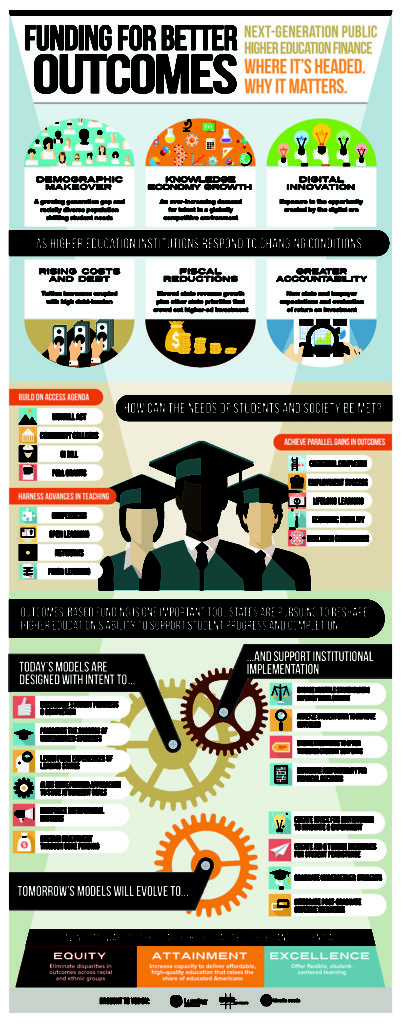Athens, Ga. – James Hearn, professor and associate director of the University of Georgia Institute of Higher Education, is among 13 higher education researchers and thought leaders nationally who have authored a series of papers to be released over the coming months by the Lumina Foundation.
The papers offer insights into how states and their public institutions have implemented outcomes-based funding models to improve upon decades-old performance- and enrollment-based funding approaches.
“Done right, outcomes-based funding has the potential to bring improved efficiency, effectiveness, and equity to public higher education in the U.S.” said Hearn. “The great challenge lies in getting it right: the multiple goals of public higher education need to be borne in mind, incentives need to be developed collaboratively by individual campuses and key stakeholders, and outcomes measures need to be well designed and well targeted. Thus far, OBF remains a ‘work in progress’ across the states.”
These outcomes-based funding policies, developed in recent years by state policymakers, working with higher education leaders, have focused on increasing student academic success and better serving students of color and students from low-income families.
Hearn’s paper, released in November, examines outcomes-based funding in historical and comparative context. Drawing on his own work over the past two decades, as well as the work of other researchers in this area, Hearn offers detailed reviews of several formula funding models and their respective strengths and weaknesses.
“State allocations for public colleges and universities are a singularly important element in the nation’s investment in higher education and thus central to its performance,” said Hearn. “Choosing among state funding approaches requires considering not only the initial but also the longer-term costs and returns, including opportunity costs. Systems driven heavily by performance on certain outcomes require long- as well as short-term thinking.”
In announcing the series of papers, the Lumina Foundation noted that numerous independent research studies have found evidence that funding models with financial incentives for colleges and universities to help students complete their programs of study result in better pathways and supports for students. The need for finance systems oriented around improving student outcomes is urgent, the Foundation argues, especially for ensuring more equitable outcomes for students from all racial and ethnic backgrounds. Only 20 percent to 28 percent of blacks, Hispanics and Native Americans have earned college degrees, according to Census figures. In comparison, nearly 60 percent of Asian Americans and 44 percent of whites have earned at least an associate degree.
“The investments that states make in higher education should move more students from all backgrounds toward postsecondary completion and should financially reward institutions that can show they are doing well by students,” said Jamie Merisotis, president and CEO of Lumina Foundation. “Emerging evidence supports the idea that, when paired with effective, student-centered practices, outcomes-based funding can boost the number of American graduates. Lumina supports the adoption of funding models that promote increased educational attainment, result in fairer educational outcomes for students of color, and promote innovation in academic delivery.”
For more information on the Lumina series, including links to the papers, see https://www.luminafoundation.org/news-and-events/s7-outcomes-based-funding-paper-series.
